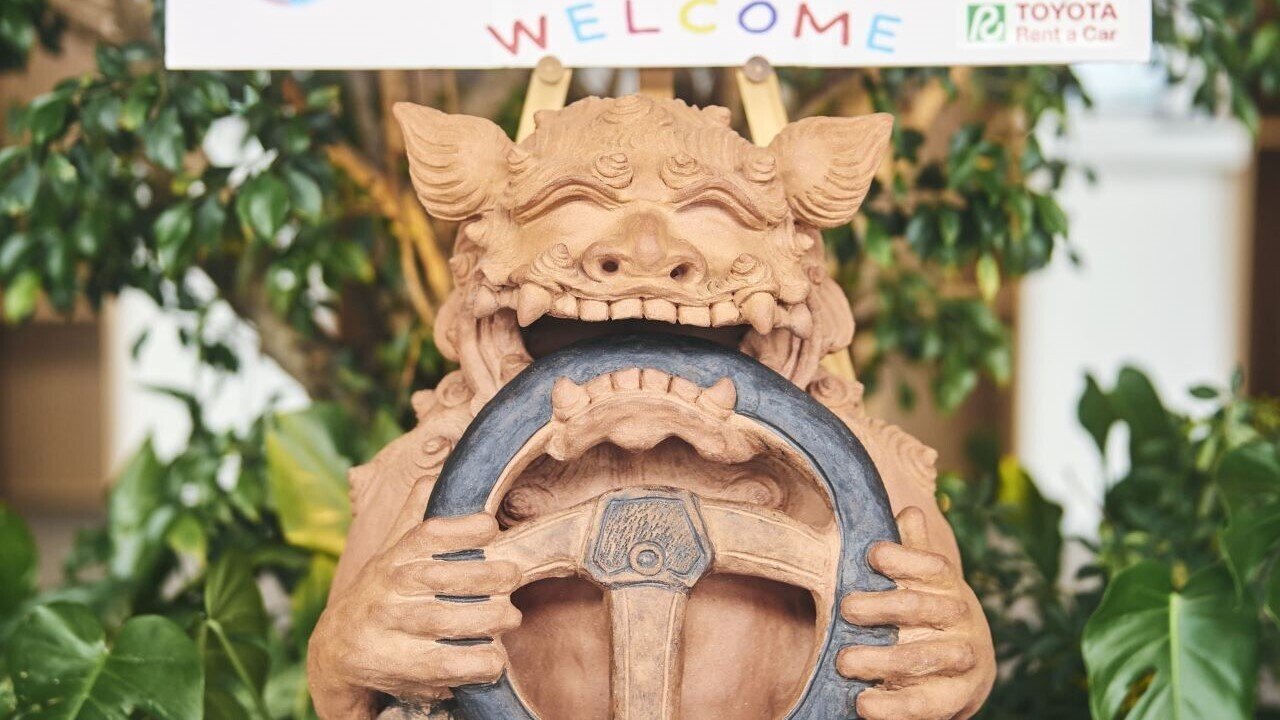
The long, snaking lines are no more! Recent efforts have dramatically shortened Okinawa's dreaded rental waiting times. We uncover the fascinating details of how it was accomplished.
Keeping a large fleet moving swiftly
In the massive parking lot where several hundred cars await pick-up, the kanban system (consisting of cards with the necessary information for production or transport) was adopted to direct how vehicle stocks are rotated.
At this particular shop, the kanban cards take the form of clipboards bearing car model codes (e.g. W2).
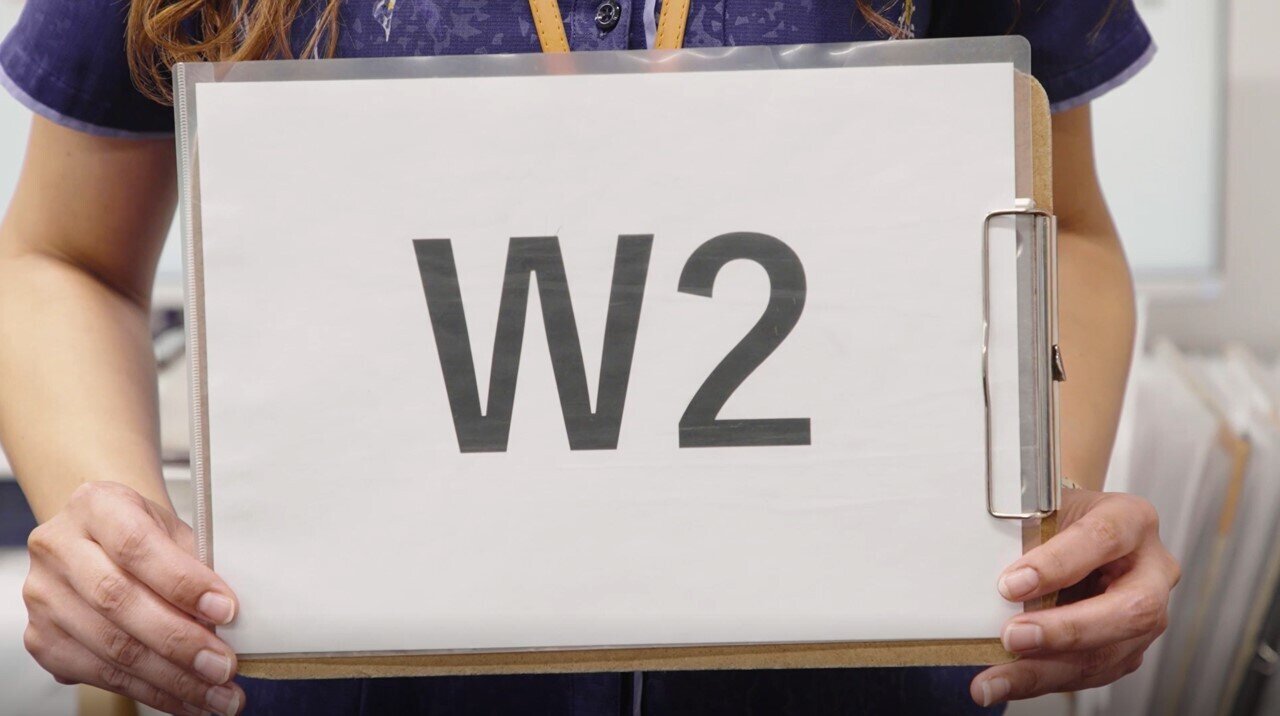
How to use the system is very simple.
1. The kanban are arranged at the reception counter, each one holding a car key and contract. They represent the cars standing ready in the pick-up area.
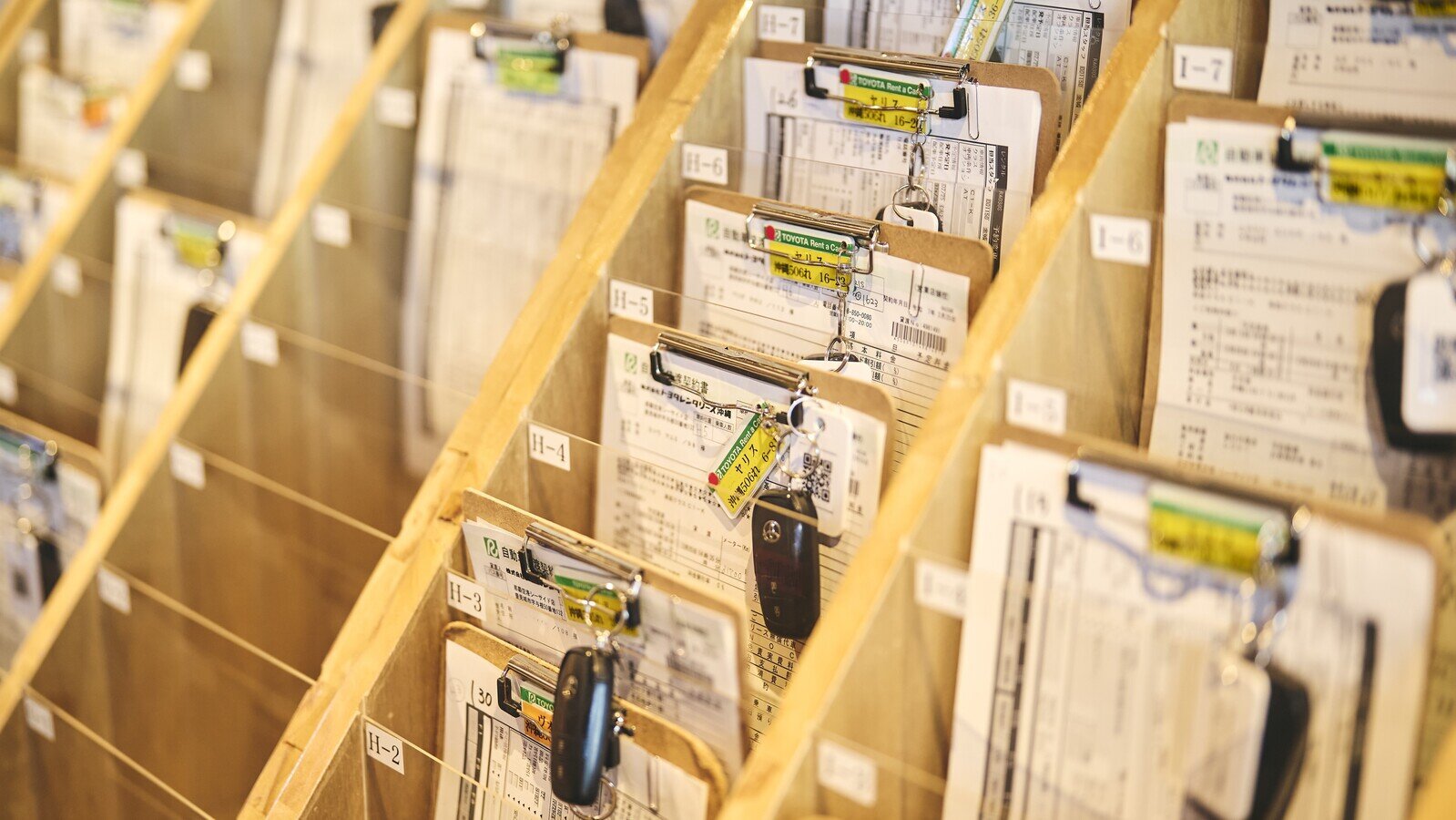
2. When a customer comes in, they are given the key and contract from the relevant kanban.
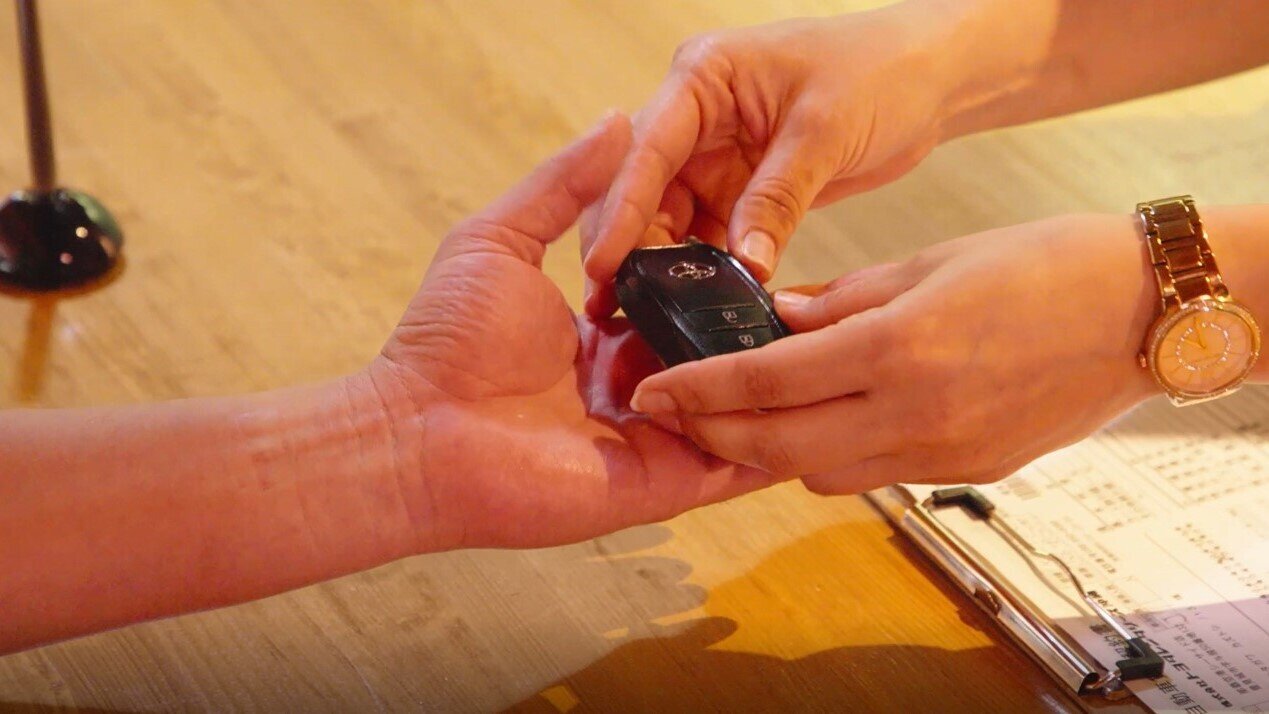
3. The empty kanban remains with the staff, giving them the authority to prepare the next car.
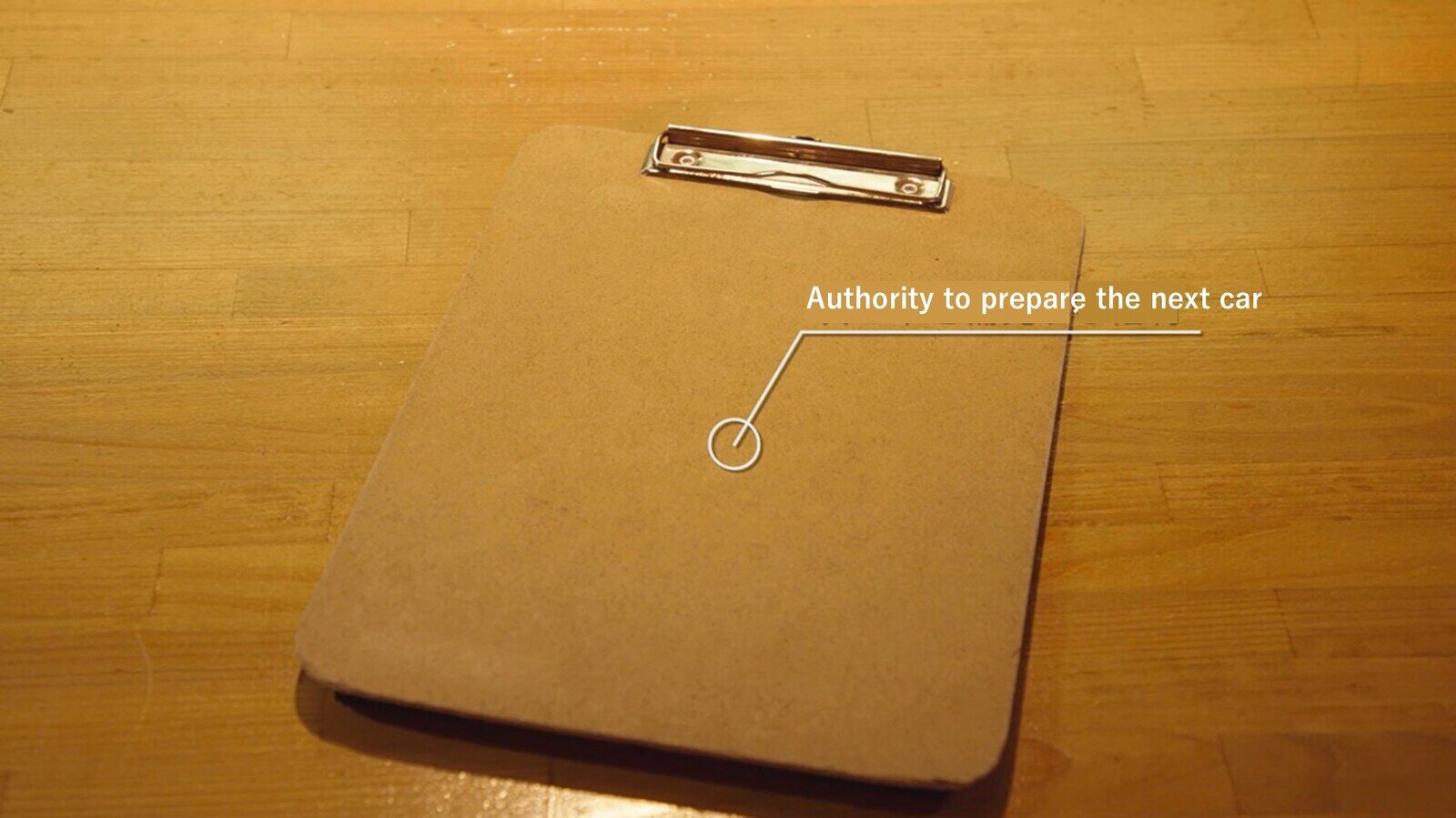
4. The staff member checks the reservation list, then clips in a sheet that notes the next class of vehicle that is needed.

5. This kanban is placed into the Vehicle Request box, where it is soon picked up by back-office staff who prepare the cars in the order requested.
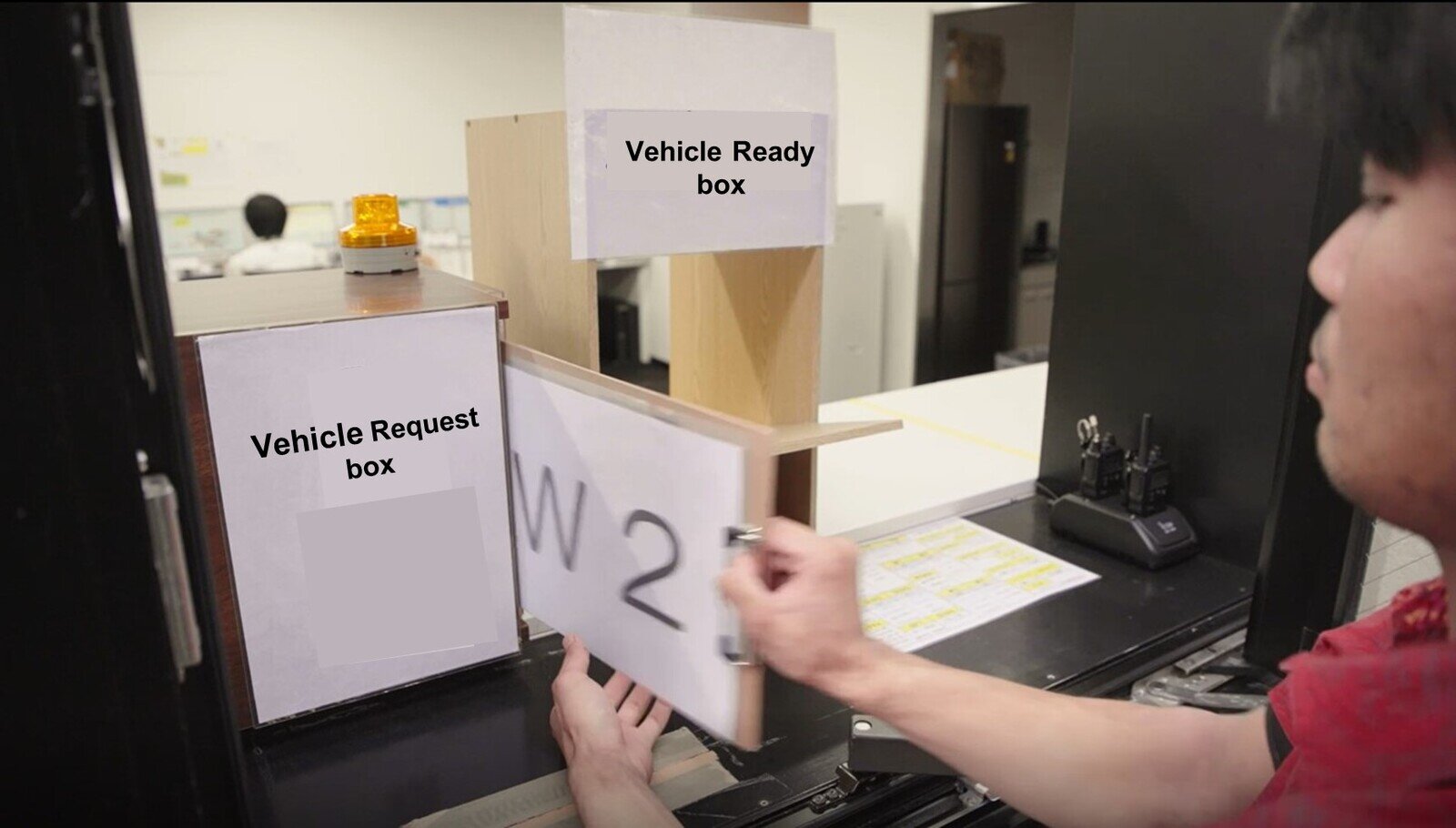
6. Screens display where the vehicle should be placed, making for smooth dispatches.

7. The kanban, now containing the car’s keys, is placed in the Vehicle Ready box.
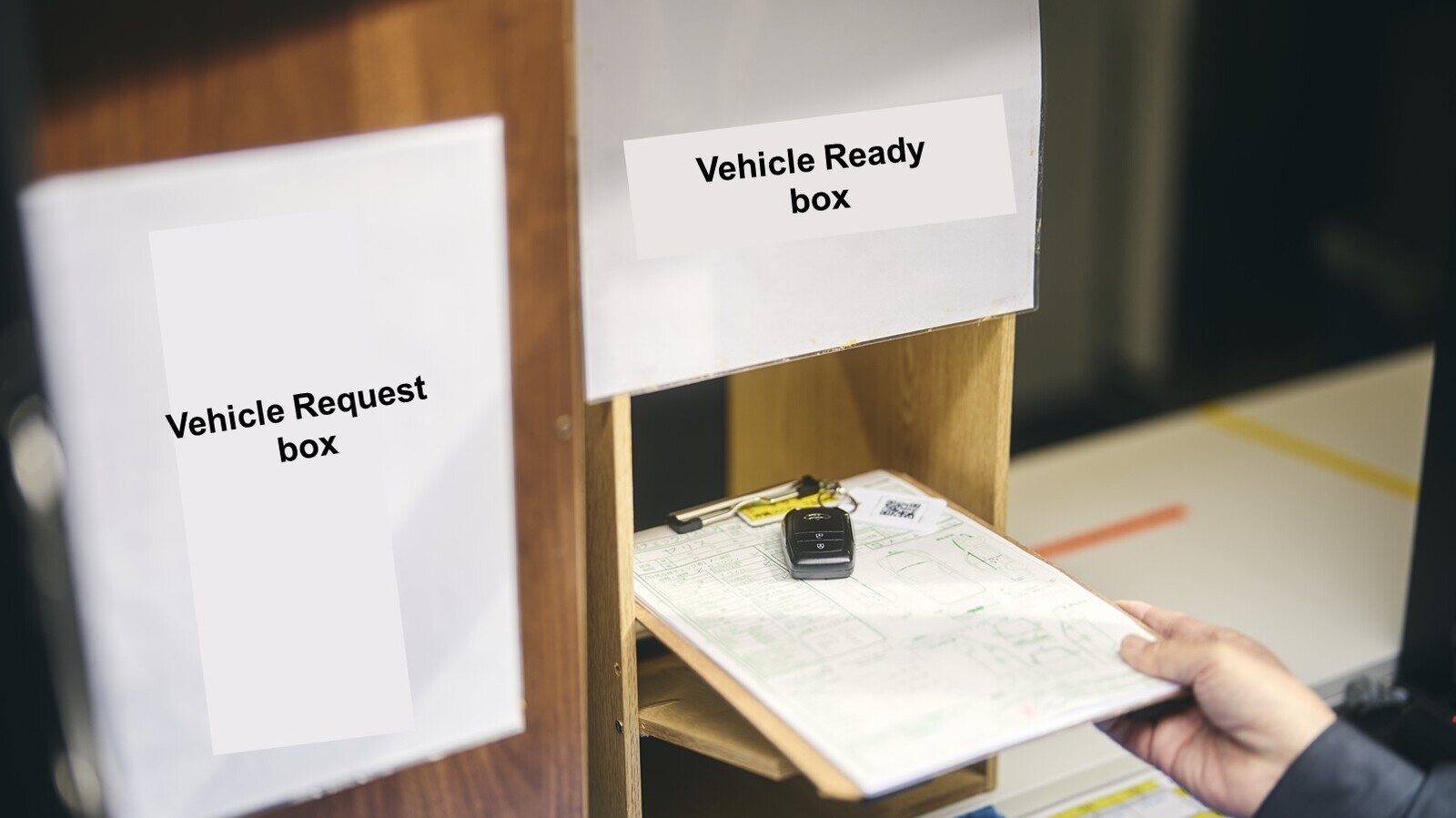
8. After depositing the kanban, the staff member takes the next clipboard from the adjacent Vehicle Request box, ensuring that cars are continuously rotated.
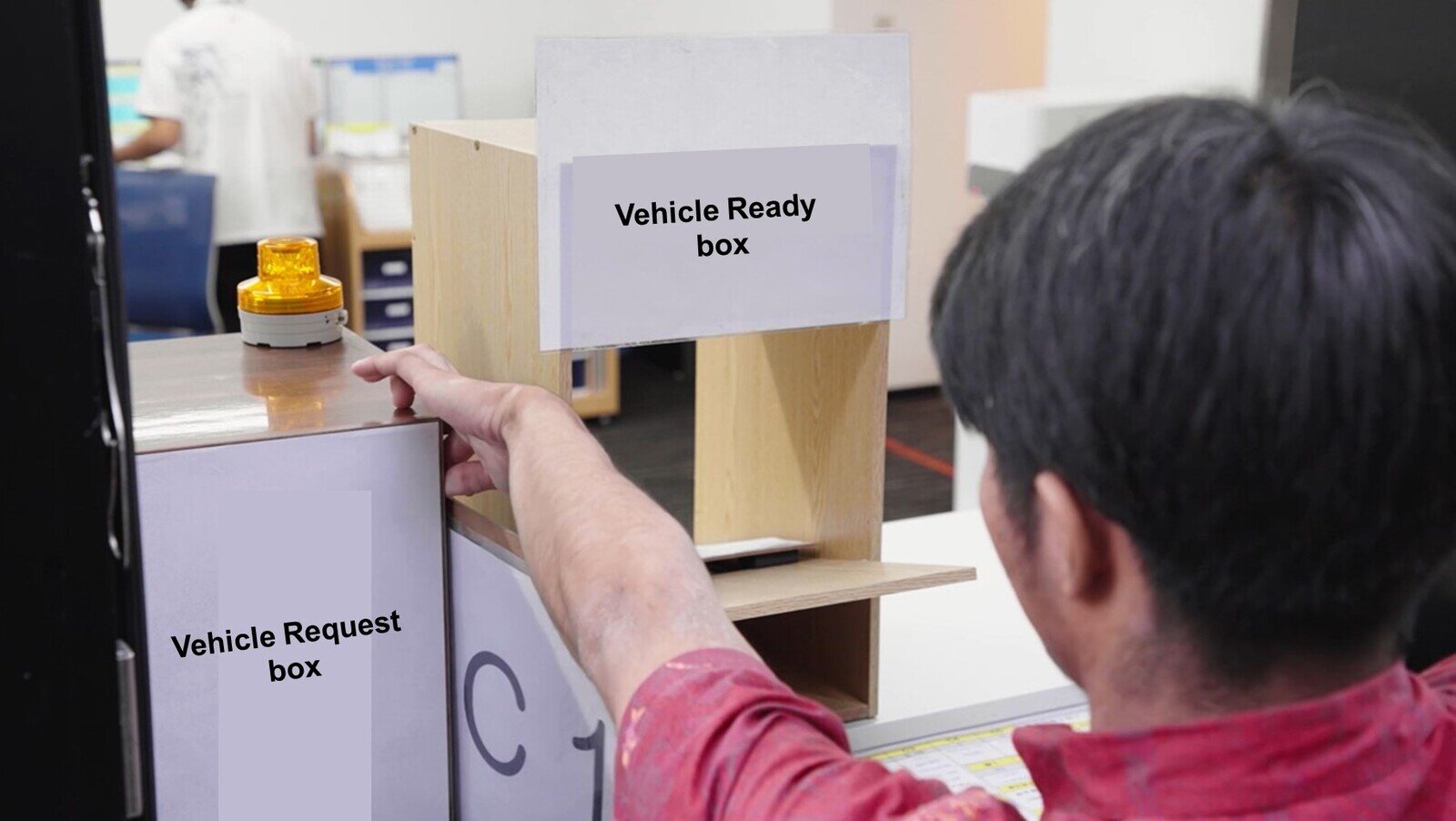
9. The number of kanban in the request box instantly reveals when work is running behind, making it easy to get backup when needed.
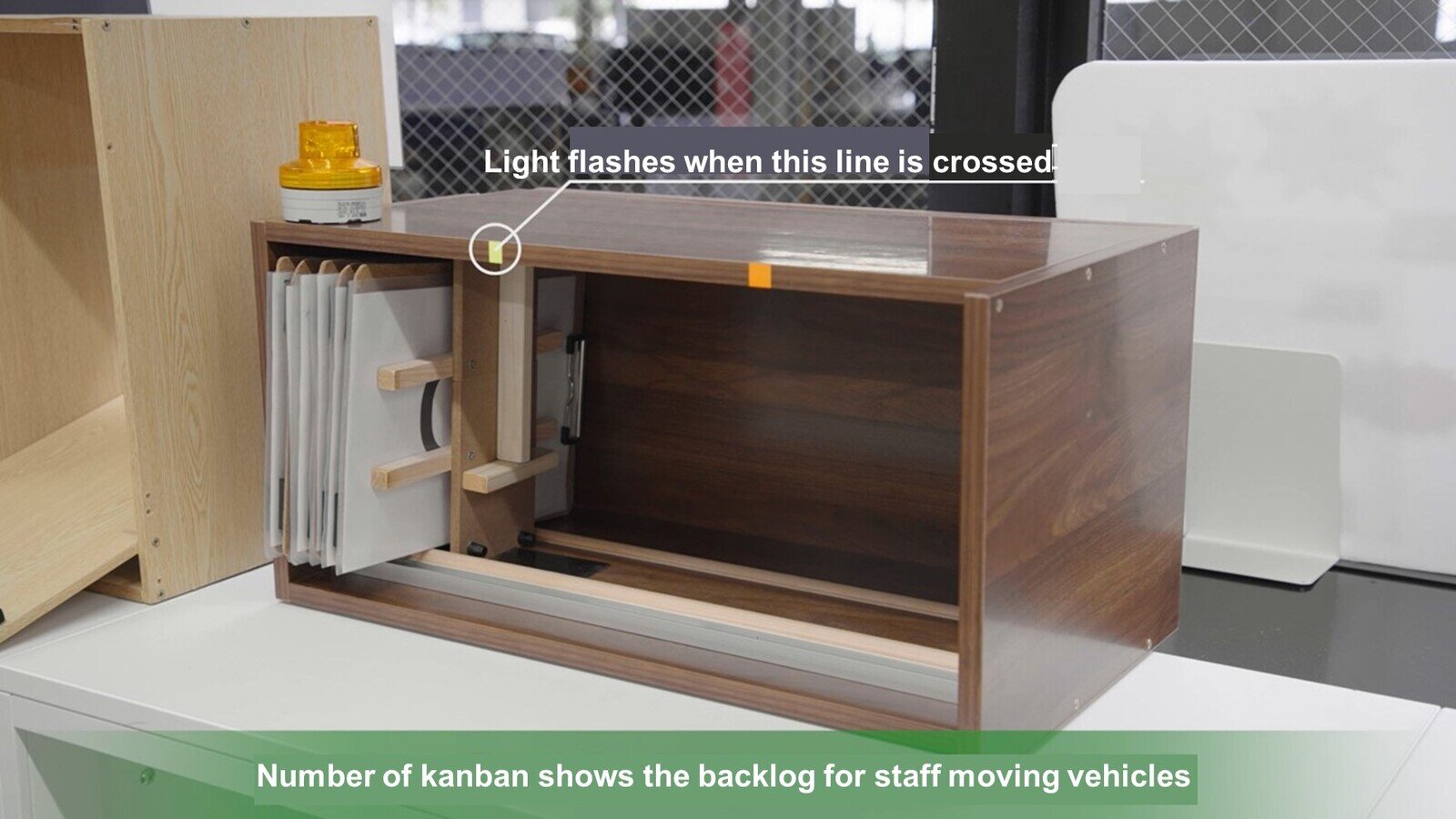
10. Increasing or decreasing the number of kanban to match demand also enables staff to independently control how many vehicles are dispatched.

This simple analog kanban system offers a visual guide for what should be delivered and when. It has streamlined operations, preventing staff from moving cars unnecessarily. The lesson learned is don’t underestimate the analog!
Daisuke Nakasone, Shop Manager, Naha Airport Seaside, Toyota Rent a Car Okinawa
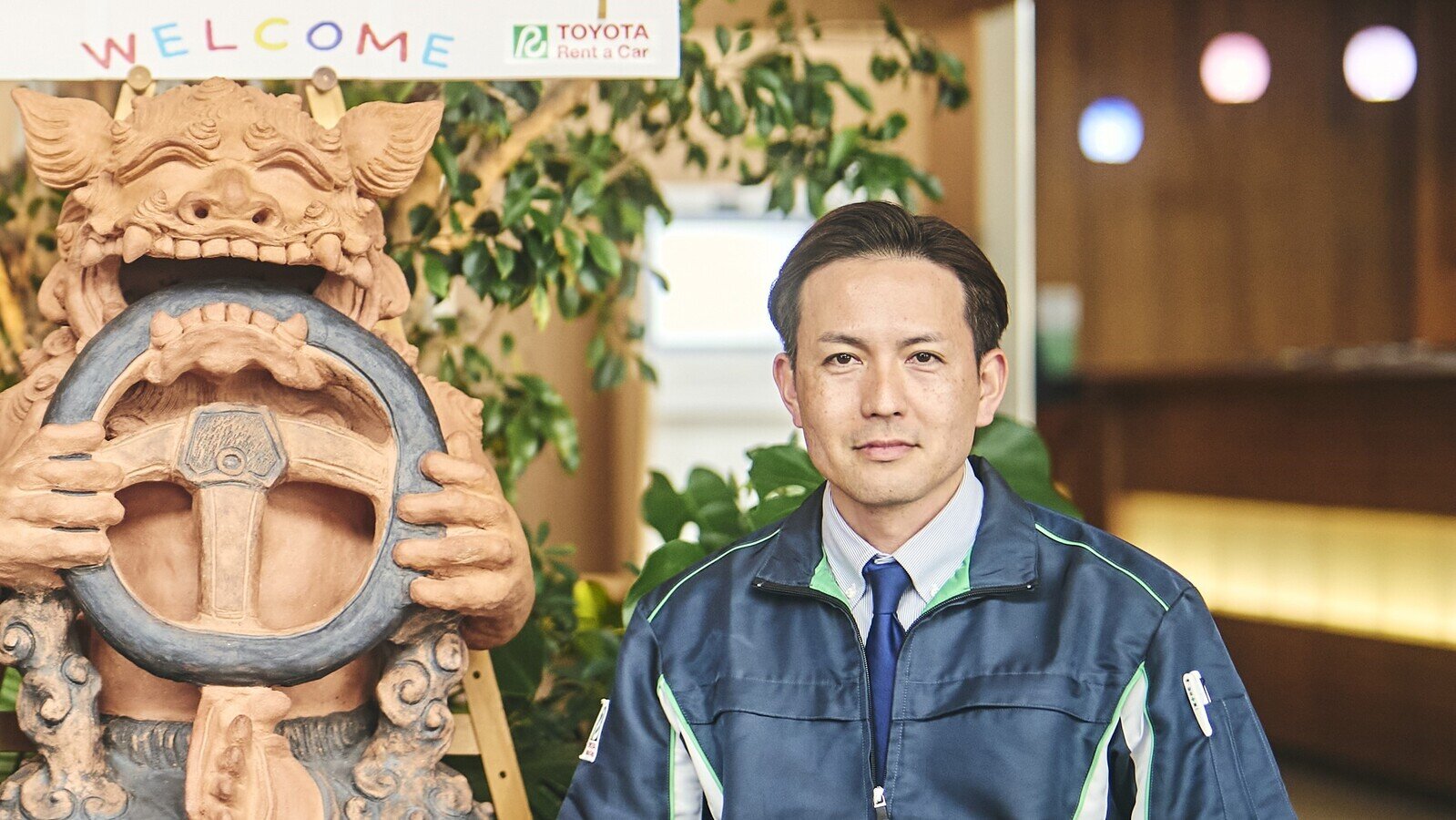
We also flipped the Vehicle Request box from horizontal to vertical. This improvement stops the clipboards from falling over so that anyone can easily take them in or out with one hand. In case you couldn’t tell, these boxes are handmade (laughs).
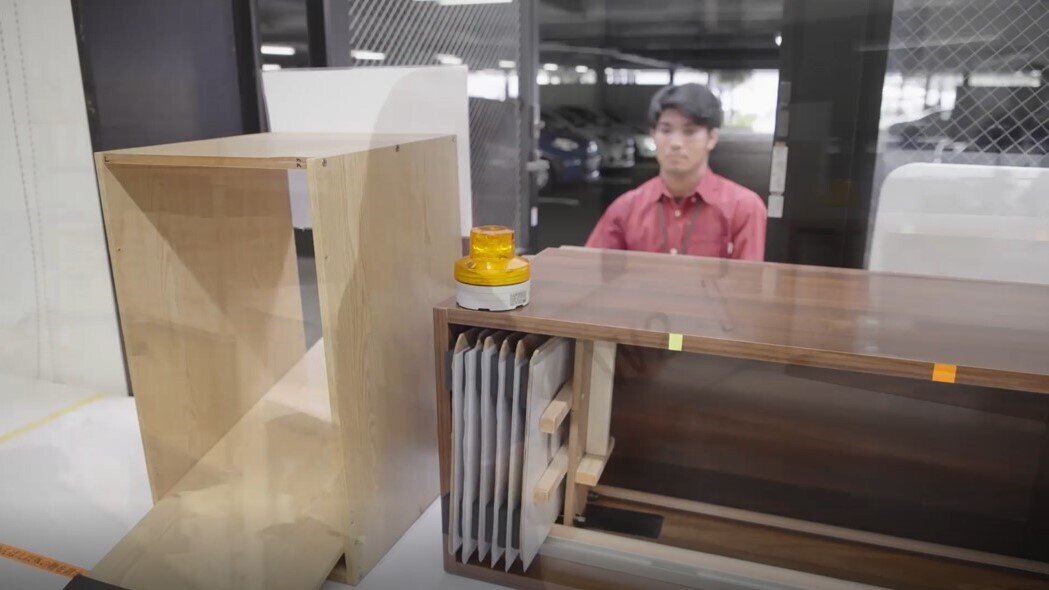
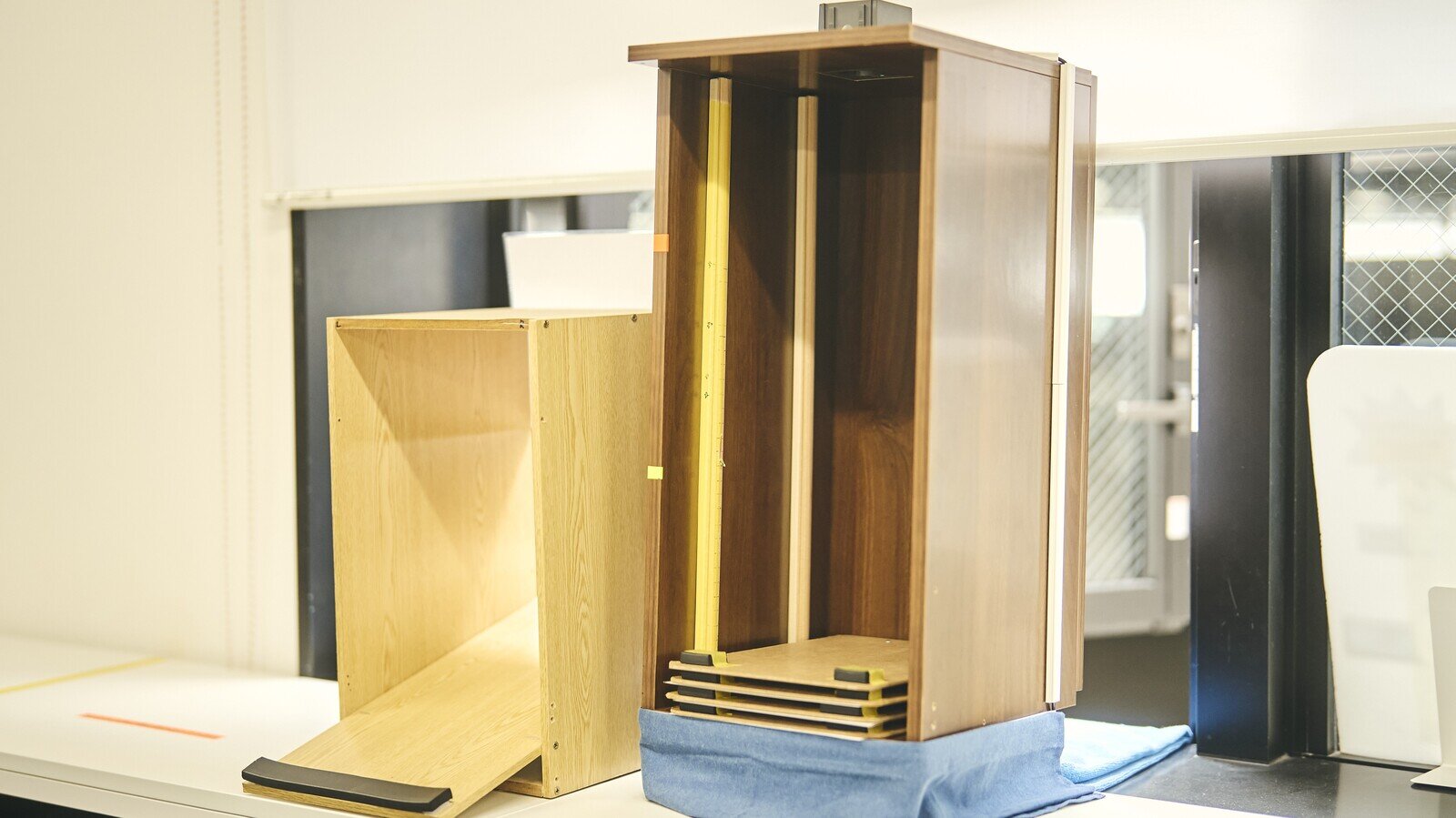
Arranging the many cars in our parking lot by how frequently they are rented also helped to reduce dispatch time per vehicle by nearly half, from seven minutes to four.
When 5,000 yen goes a long way
Yet the path wasn’t entirely easy going. After installing a large number of RaCCU automated check-in machines, for example, the shop started out with a utilization rate of just 38%.
To raise the figure, the shop displayed a video explaining the ease of RaCCU use on shuttle buses before they reached the store. The Naha Airport Shop also devised some simple improvements.
Rikito Miyazato, Shop Manager, Naha Airport, Toyota Rent a Car Okinawa
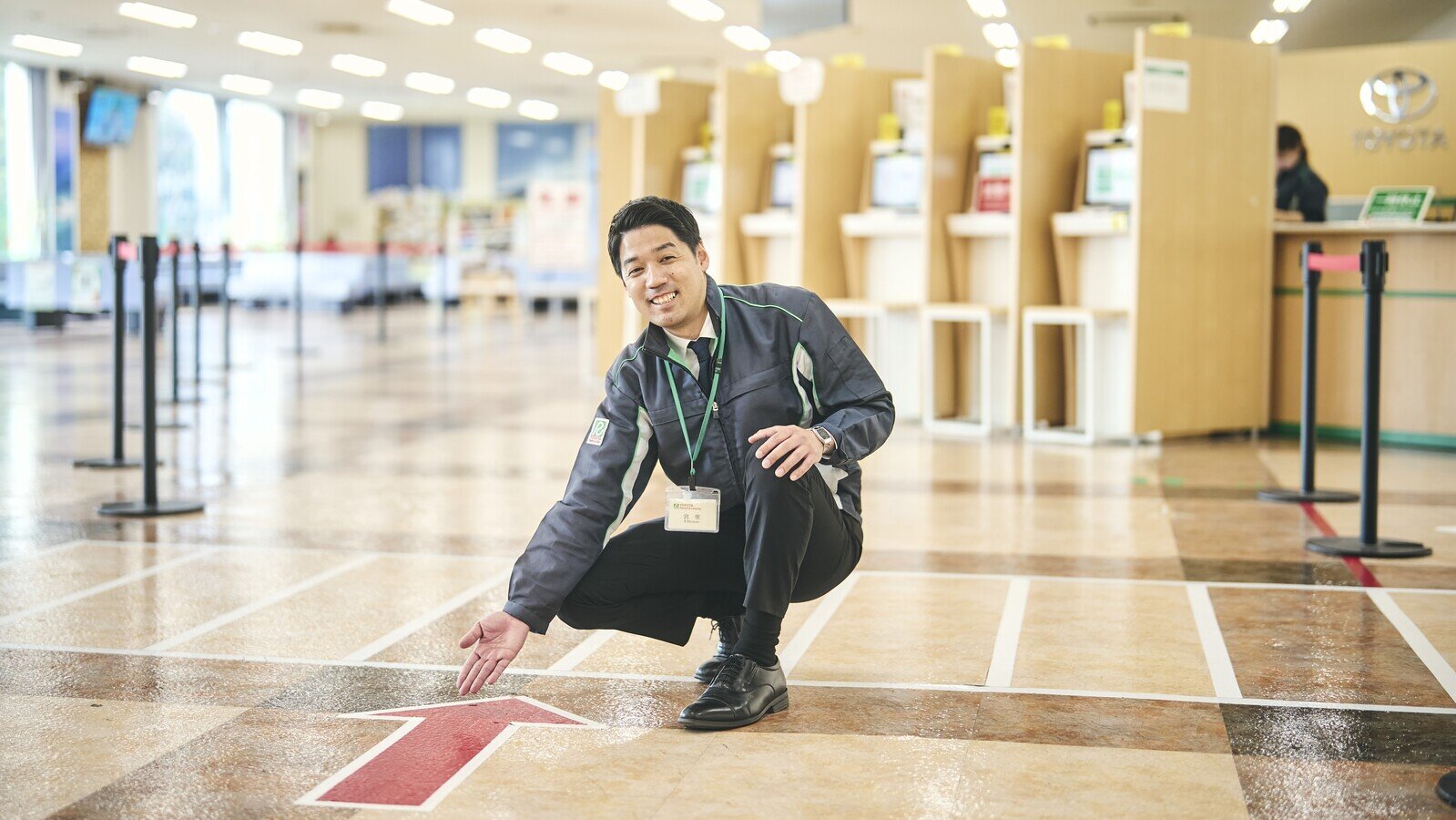
We placed arrow stickers on the floor to help guide arriving customers to the RaCCU machines. This DIY solution cost us about 5,000 yen (laughs).
Our data shows that RaCCU usage rose to 44% at Naha Airport, and 87% at the Seaside Shop.
Interestingly, such analog improvements produced significant results, saving both time and money.
Even as they made work easier for employees, these kaizen efforts increased the number of vehicles rented out around Naha Airport by 20%. The shop staff also say that “things are completely different from before” and are eager to continue delivering better service.
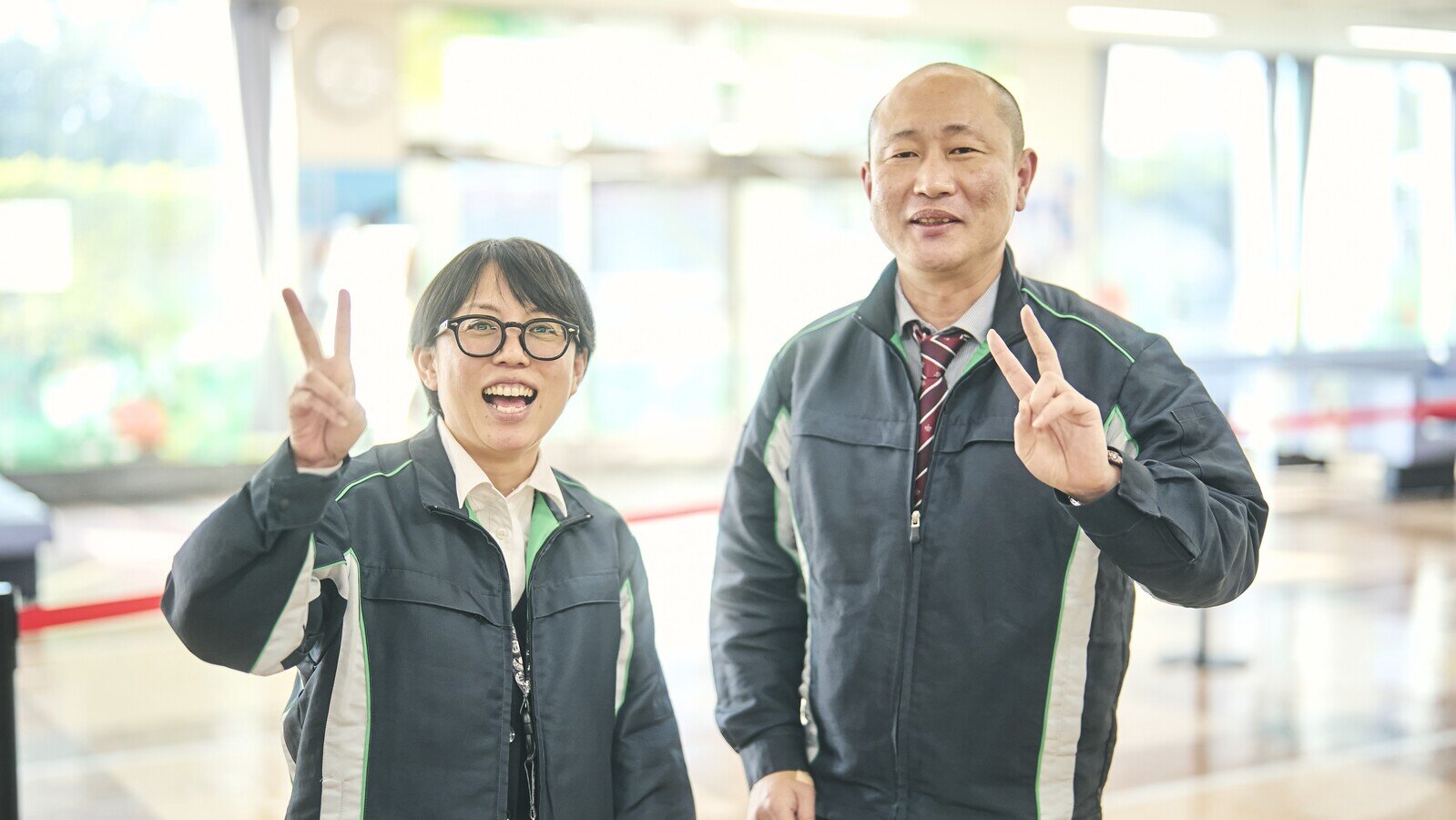
One strength of the Toyota Production System is that, despite being developed for carmaking, it can be applied to any genba.
Anticipating further growth in overseas tourists, the Naha Airport Shop has set up RaCCU to support four languages. If this proves successful, the multilingual shift may be rolled out across the country.
According to Deputy General Manager Takanohashi, the company is also strengthening its car share offerings, which can be used seamlessly with online reservations. We look forward to seeing the team’s future efforts to provide comfortable and convenient transport in this ever-popular tourist destination.


